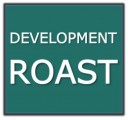Despite the progress the world has made towards eliminating extreme poverty, one in five people on the planet are still unable to provide for their most basic needs. A report by the High Level Panel—a 27 member group advising the United Nations on a global development framework beyond the target date for the Millennium Development Goals (MDGs)—on the post-2015 development addresses this unacceptable statistic by placing the eradication of poverty on the global agenda. The question that begs answering: ‘What and whose poverty?’
Pause for a moment and picture Aisha: She is a young widow who lives in rural northern Nigeria. She has five children, but cannot afford to send them to school. They live in a thatch-roofed wooden hut, and the closest source of potable water is 50 km away. Aisha earns an average of $2 a day. Would you describe Aisha as poor and why is this important? On the national and global scale, two reasons immediately come to mind. The adopted measure of poverty will guide who is targeted with scarce development resources and how we assess meeting national and global poverty goals. In addition, measures can be powerful drivers of change along the direction of whatever is assessed. Read More »
 Development Roast Giving international development a proper roasting
Development Roast Giving international development a proper roasting



 What exactly leads to development is a topic of great debate in academic and practical circles. Proposed cures for
What exactly leads to development is a topic of great debate in academic and practical circles. Proposed cures for 
 There is more to life than money and by now it is well established that gross domestic product (GDP) is an inadequate measure of development. It allows for a crude assessment of economic activity within a country, but does not account for side effects known as externalities. These include environmental destruction and pollution, human lives lost in other countries from the development and sales of weapons technologies or negative effects on health of products and technologies that otherwise make money and therefore contribute to GDP. Furthermore, negative contributions of products developed by tobacco, weapons and other companies all count towards a positive GDP figure, further diminishing the emphasis we should place on it as an indicator of human progress.
There is more to life than money and by now it is well established that gross domestic product (GDP) is an inadequate measure of development. It allows for a crude assessment of economic activity within a country, but does not account for side effects known as externalities. These include environmental destruction and pollution, human lives lost in other countries from the development and sales of weapons technologies or negative effects on health of products and technologies that otherwise make money and therefore contribute to GDP. Furthermore, negative contributions of products developed by tobacco, weapons and other companies all count towards a positive GDP figure, further diminishing the emphasis we should place on it as an indicator of human progress.